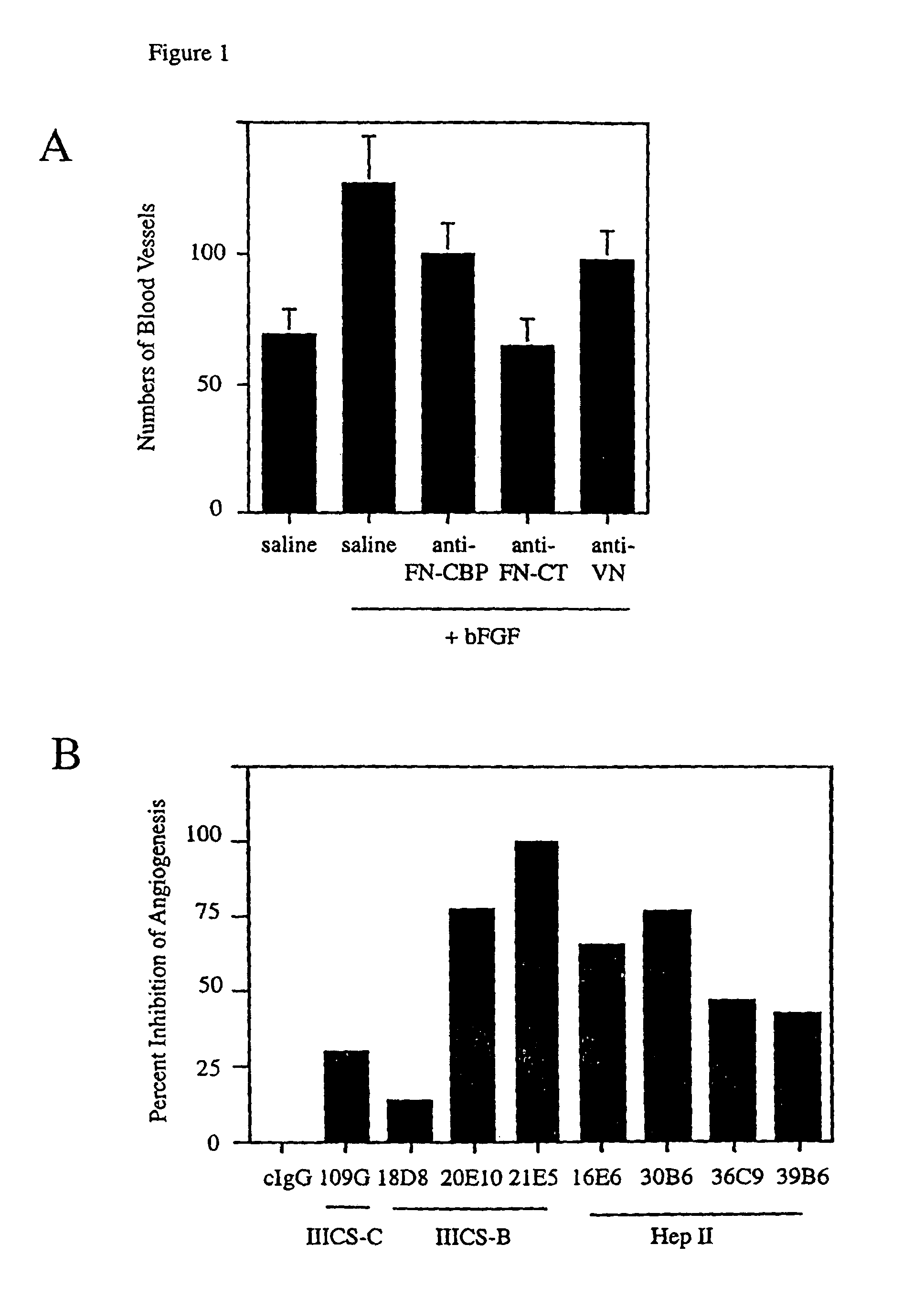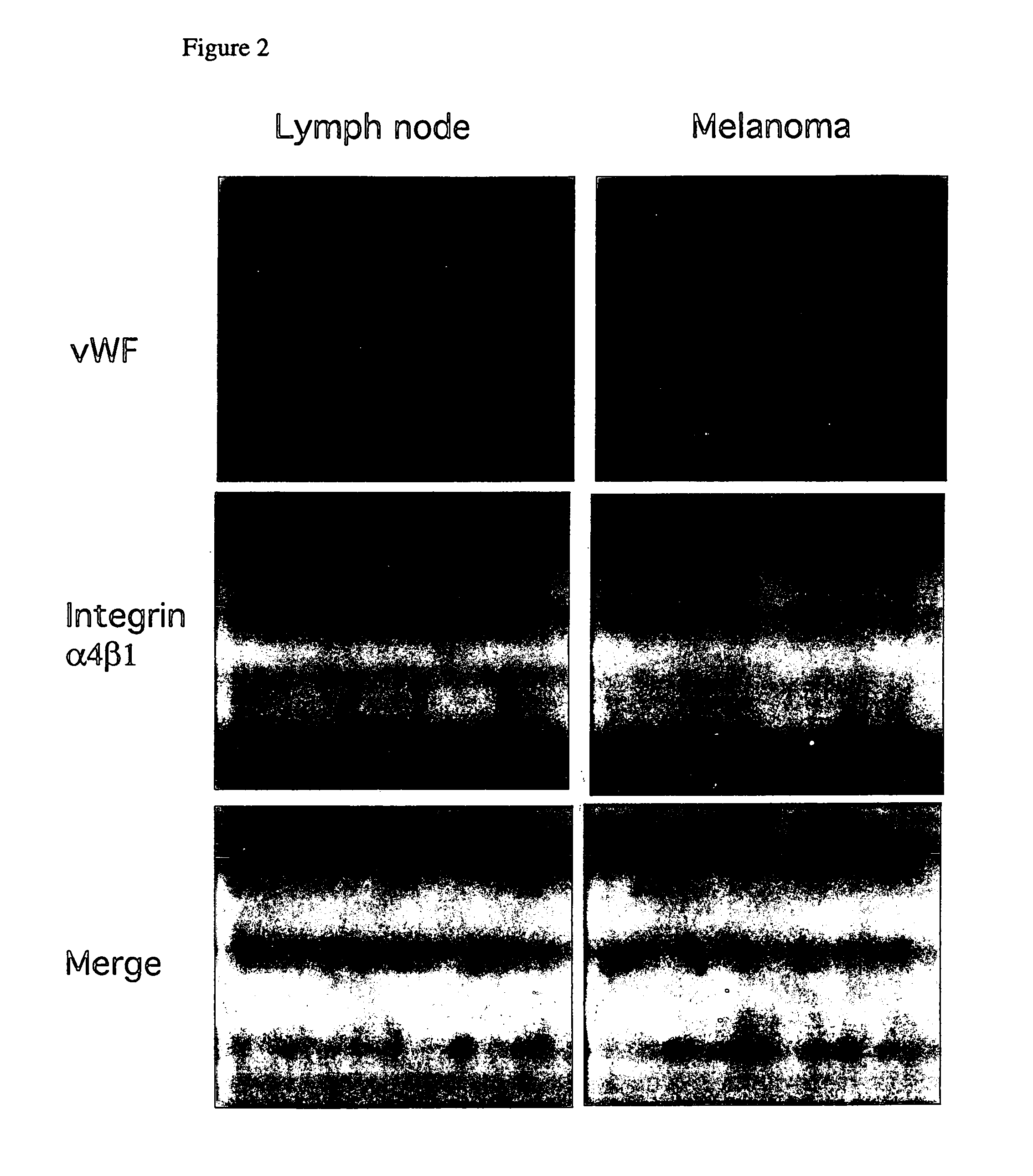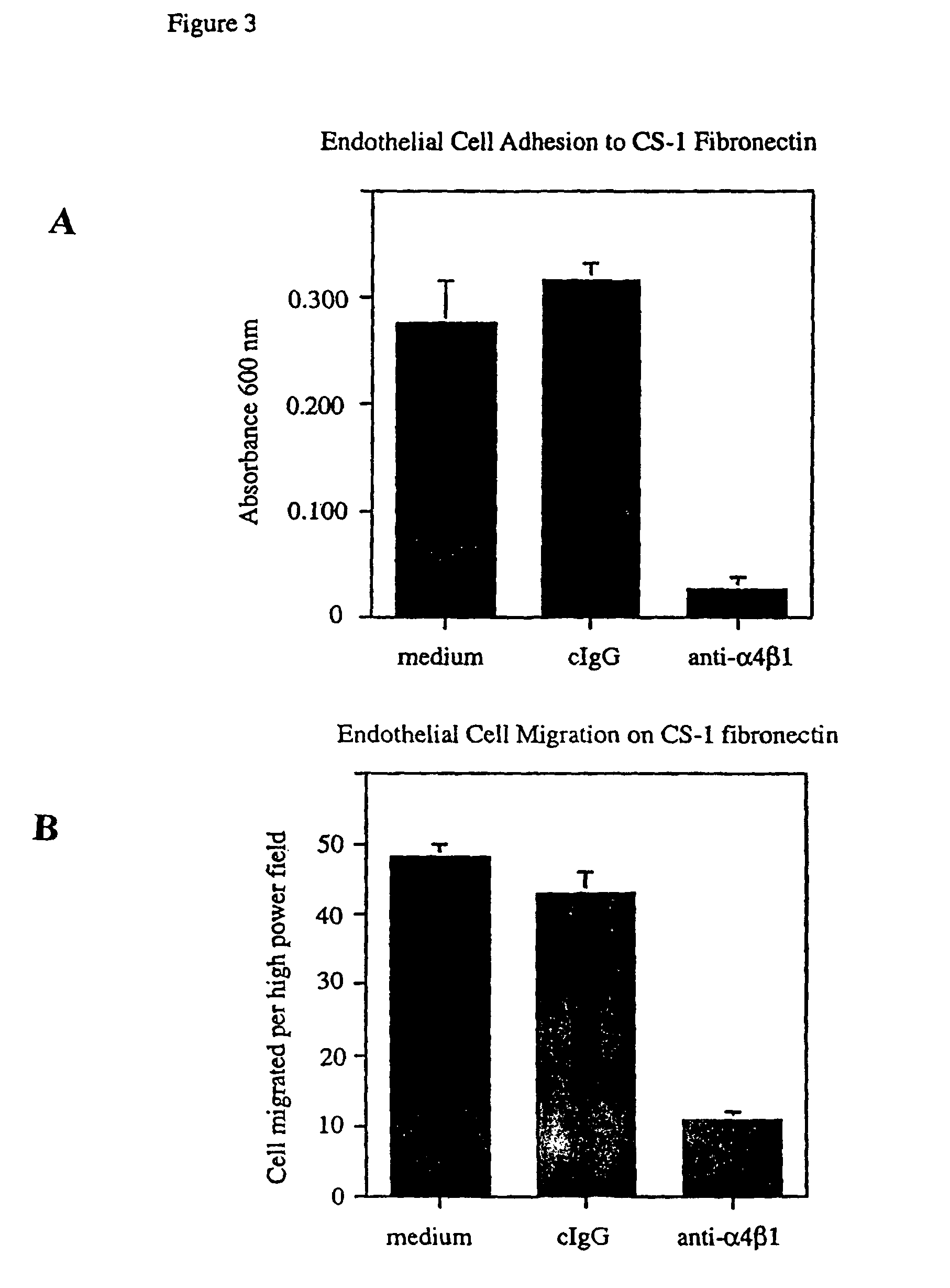Methods for inhibiting angiogenesis
an angiogenesis and angiogenesis technology, applied in the direction of angiogenin, drug compositions, peptides, etc., can solve the problems of inability to detect and inhibit angiogenesis, and low survival rate of most cancers, so as to inhibit angiogenesis, inhibit angiogenesis in skin tissue, and inhibit angiogenesis.
- Summary
- Abstract
- Description
- Claims
- Application Information
AI Technical Summary
Problems solved by technology
Method used
Image
Examples
example 1
Inhibition of Angiogenesis by Anti-Fibronectin Antibody
[0193]Angiogenesis was stimulated on the surface of the chick chorioallantoic membrane (“CAM”) by applying a 5 mm filter disk on the CAM saturated with basic fibroblast growth factor (“bFGF”), vascular endothelial growth factor (“VEGF”), interleukin 8 (“IL-8”), tumor necrosis factor alpha (“TNF-α”) or saline. Twenty four hours after angiogenesis had been stimulated saline, 25 μg control IgG, 25 μg of an antibody directed against the cell binding peptide of fibronectin (Anti-CPB), 25 μg of an antibody directed against the fibronectin C-terminus (Anti-CT), 25 lag of an antibody directed against the cell binding peptide of fibronectin (Anti-CBP) or 25 μg of an antibody directed against vitronectin (Anti-VN) were applied to the CAM of eight to ten eggs each in a volume of 25 μl. Forty eight hours after this, CAMs were excised from the egg and the number of blood vessels in each filter disk were counted. The results are shown in FIG....
example 2
Immunohistochemical Analysis of Integrin α4β1 Expression in Normal and Tumor Tissue
[0196]Five micron frozen sections of human normal thymus (FIG. 2A) and melanoma (FIG. 2B) were fixed for 2 minutes in acetone, air dried and rehydrated for 5 minutes in phosphate buffered saline. Sections were then blocked for 2 hours in a 2% bovine serum albumin in phosphate buffered saline and incubated with 5 μg / ml anti-α4β1 monoclonal antibody and anti-von Willebrand Factor (a marker of endothelial cells used by pathologists to identify blood vessels) polyclonal antibody for one hour room temperature. Sections were washed in PBS and incubated in 1:400 dilution of goat anti-rabbit-FITC and in goat anti-mouse-rhodamine for 1 hour at room temperature. Slides were well washed, and coverslips were mounted in one drop of Fluoromount, prior to photography under fluorescent illumination. Blood vessels positive vWF (von Willebrand Factor) only are green, cells positive for integrin α4β1 only are red and bl...
example 3
Inhibition of Human Neonatal Cell Adhesion to, and Migration of Human Vascular Endothelial Cells on, CS-1 Fibronectin by Anti-Integrin α4β1 Antibody
1. Endothelial Cell Adhesion:
[0198]The wells of 48 well culture dishes were coated with 10 μg / ml CS-1 fibronectin for one hour at 37° C. and blocked with 2% bovine serum albumin in phosphate buffered saline for one hour. Fifty thousand cells in 250 μl of adhesion buffer were added in triplicate to wells containing 250 μl of a solution of 50 μg / ml of an anti-α4β1 blocking antibody in adhesion buffer, 50 μg / ml of control antibody in adhesion buffer or adhesion buffer (Hepes buffered Hanks balanced salt solution, HBSS). Human neonatal umbilical vein endothelial cells were allowed to adhere to dishes for ten to twenty minutes at 37° C. Nonadherent cells were removed by washing each well four times with 500 μl of adhesion buffer. Adherent cells were then fixed for 15 minutes with 3.7% paraformaldehyde in phosphate buffered saline and stained ...
PUM
| Property | Measurement | Unit |
|---|---|---|
| volume | aaaaa | aaaaa |
| anti-vascular cell adhesion | aaaaa | aaaaa |
| vascular cell adhesion | aaaaa | aaaaa |
Abstract
Description
Claims
Application Information
 Login to View More
Login to View More - R&D
- Intellectual Property
- Life Sciences
- Materials
- Tech Scout
- Unparalleled Data Quality
- Higher Quality Content
- 60% Fewer Hallucinations
Browse by: Latest US Patents, China's latest patents, Technical Efficacy Thesaurus, Application Domain, Technology Topic, Popular Technical Reports.
© 2025 PatSnap. All rights reserved.Legal|Privacy policy|Modern Slavery Act Transparency Statement|Sitemap|About US| Contact US: help@patsnap.com



